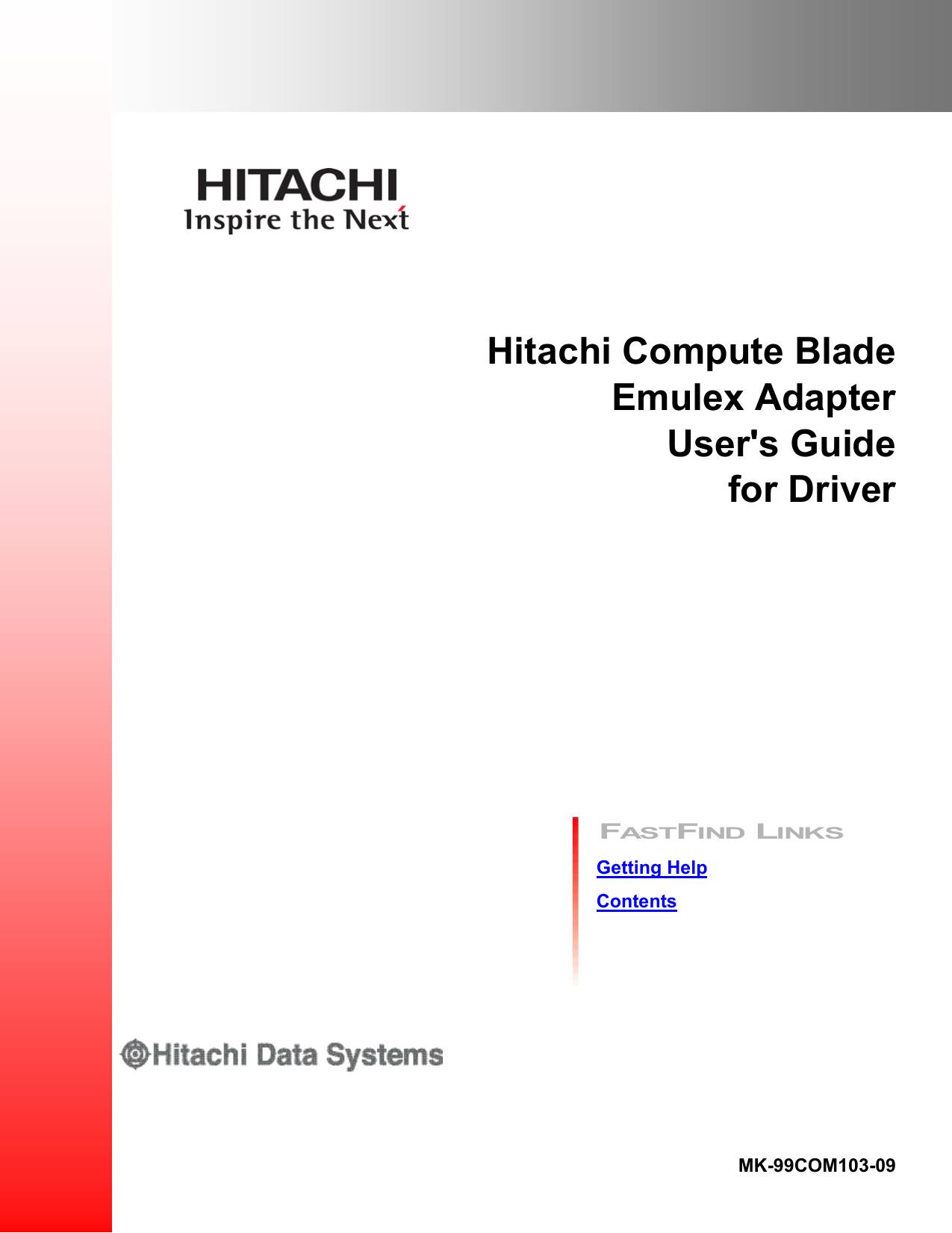

- #Emulex Storport Miniport Driver Core Kit Package how to#
- #Emulex Storport Miniport Driver Core Kit Package free#
- #Emulex Storport Miniport Driver Core Kit Package windows#
#Emulex Storport Miniport Driver Core Kit Package windows#
Increase the maximum transfer size on the fibre channel HBA from the WIndows default of 512kb to 2mb. limit the contention for the disk queue when multiple files on a single LUN are hotĬonsider using trace flags 1117 (trigger all database files in the same filegroup to grow together) and trace flag 1118 (no mixed extents). limit filesystem fragmentation when files expandģ.

Go ahead and use multiple tempdb files (a reasonable number) - but one file per LUN. I'll end for now by repeating my recommendations for tempdb, which I recently gave out on the #sqlhelp hashtag. \\SASQ1024\LogicalDisk(V:)\Current Disk Queue Length

\\SASQ1024\LogicalDisk(U:)\Current Disk Queue Length The 'current disk queue length' give us a clue, although they don't explain the whole story. Why would writes interfere with read latency in such a strongly correlated way? So, writes and write bytes to tempdb seem pretty well correlate to the spikes in read and write latency. \\SASQ1024\LogicalDisk(V:)\Disk Write Bytes/sec \\SASQ1024\LogicalDisk(U:)\Disk Write Bytes/sec \\SASQ1024\LogicalDisk(V:)\Disk Writes/sec \\SASQ1024\LogicalDisk(U:)\Disk Writes/sec so read throughput, whether operations or bytes, doesn't seem to correlate well to the spikes in latency. \\SASQ1024\LogicalDisk(V:)\Disk Read Bytes/sec \\SASQ1024\LogicalDisk(U:)\Disk Read Bytes/sec \\SASQ1024\LogicalDisk(V:)\Disk Reads/sec \\SASQ1024\LogicalDisk(U:)\Disk Reads/sec
#Emulex Storport Miniport Driver Core Kit Package how to#
Lets try to correlate the high read latency to other perfmon metrics, in order to find out how to help. The server is not very busy, but spending a lot of time above the 'poor' threshold, with lots of 'shockingly bad' values and some 'Wow!'. \\SASQ1024\SQLServer:Buffer Manager\Page lookups/sec \\SASQ1024\Processor(_Total)\% Processor Time How busy is this system? Not so busy, according to these perfmon metrics. So, on this system disk concerns for tempdb can be a significant performance factor. Even if the bpool database pages contained only tempdb, it would contain less than half of the highwater mark of the tempdb data footprint. At a minimum, the highwater mark of tempdb data footprint was 148 GB during this timeframe.Īt the same time, the bpool database pages ranged from 38.3 GB to 58.8 GB.
#Emulex Storport Miniport Driver Core Kit Package free#
\\SASQ1024\SQLServer:Transactions\Free Space in tempdb (KB)ĭuring the observed window, tempdb ranges from 172 GB to 320 GB of free space. \\SASQ1024\SQLServer:Buffer Manager\Database pages On this system is it accurate to say that 'most of tempdb is in the buffer pool'? Lets use these perfmon counters to determine that. Perfmon data was collected from the system with a 15 second interval. There are 12 tempdb files on each of two LUNs. The file layout includes 24 tempdb files - one for each logical processor (hyperthreading is enabled). The storage is pretty standard: virtual pools on an EMC VNX. This is not a monster system by any means. : Intel64 Family 6 Model 44 Stepping 2 GenuineIntel ~3066 MhzĮmulex AJ763A/AH403A, PCI Slot 2, Storport Miniport DriverĮmulex AJ763A/AH403A, PCI Slot 3, Storport Miniport Driver OS Name: Microsoft Windows Server 2008 R2 Enterprise The OS is WS2008R2 SP1, and the database version is Microsoft SQL Server 2008 R2 (SP2).ĭetails as they appear in a smash-n-grab. here's the system: HP D元80 with two 3.07GHz hex-core Xeon x5675 processors, just shy of 96GB RAM, 2 dual port Emulex HBA adapters. I'll use Paul Randal's recent categorization of disk latency (though for DSS/Data Warehouse systems I typically categorize IO performance in a different manner).

Lets start with a reasonable measuring stick for whether or not there is a performance problem. Lets dive into that, at least for a quick lap. Believe me, its none too easy to convince folks to change when, for the most part, the most respected names in SQL Server performance talk frequently about multiple tempdb data files, but almost never about using multiple LUNs to host those files. I am seeing it more and more often these days. Sure enough, there can be trouble with too many tempdb files on a single LUN.


 0 kommentar(er)
0 kommentar(er)
